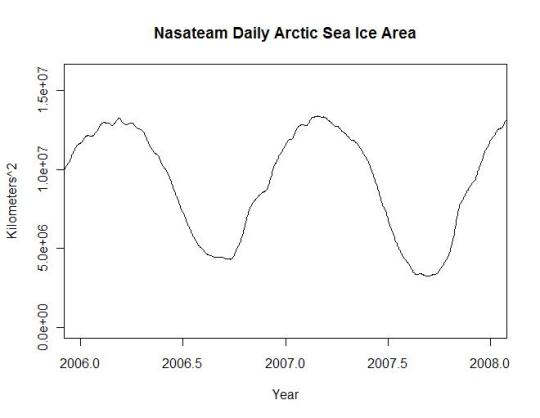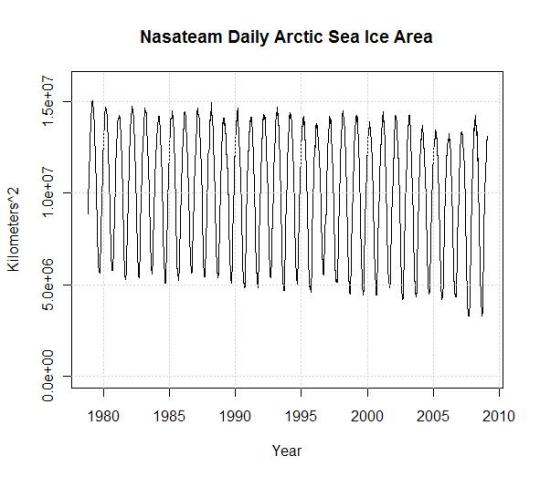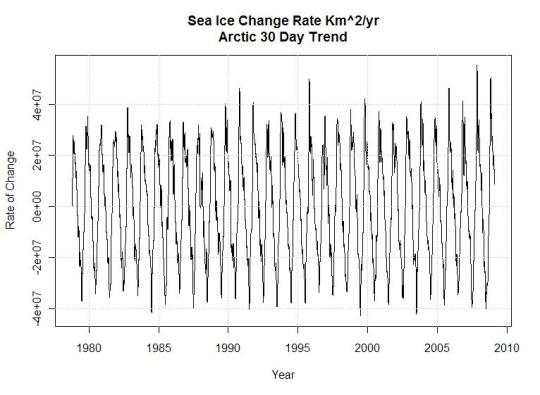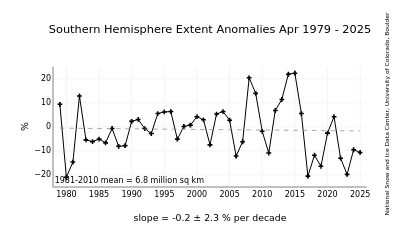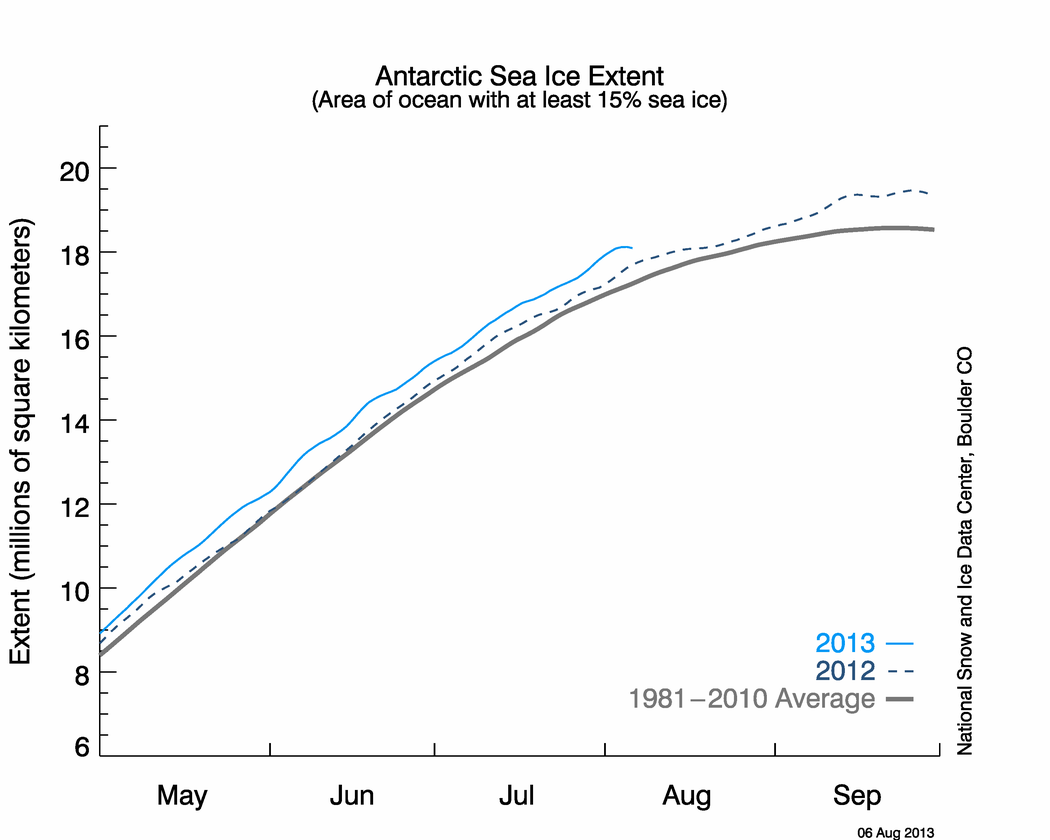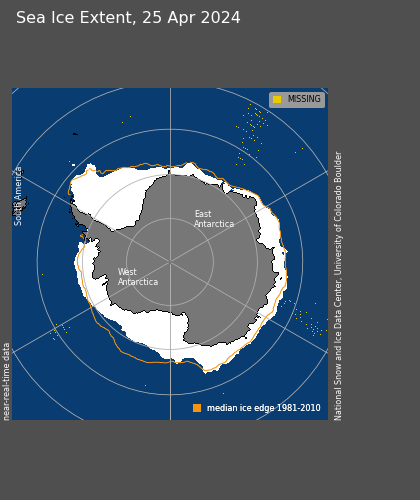Melting icebergs, so long the iconic image of
global warming, are triggering a natural process that could delay or even end climate change, British scientists have found.
A team working on board the Royal Navy’s HMS Endurance off the coast of Antarctica have discovered tiny particles of iron are released into the sea as
the ice melts.
The iron feeds algae, which blooms and sucks up damaging carbon dioxide (CO2), then sinks, locking away the harmful greenhouse gas for hundreds of years.
 British scientists have discovered that green algae could bury CO2 omissions at the bottom of the ocean
British scientists have discovered that green algae could bury CO2 omissions at the bottom of the oceanThe team think the process could hold the key to staving off globally rising temperatures.
Lead researcher Professor Rob Raiswell, from Leeds University, said: ‘The Earth itself seems to want to save us.’
As a result of the findings, a ground-breaking experiment will be held this month off the British island of South Georgia, 800 miles south east of the Falklands. It will see if the phenomenon could be harnessed to contain rising
carbon emissions.
Researchers will use several tons of iron sulphate to create an artificial bloom of algae. The patch will be so large it will be visible from space.
Scientists already knew that releasing iron into the sea stimulates the growth of algae. But environmentalists had warned that to do so artificially might damage the planet’s fragile ecosystem.
Last year, the UN banned iron fertilisation in the Great Southern Ocean.
 The team working on board HMS Endurance off the coast of Antartica have discovered tiny particles of iron are released into the sea as ice melts
The team working on board HMS Endurance off the coast of Antartica have discovered tiny particles of iron are released into the sea as ice meltsHowever, the new findings show the mechanism has actually been operating naturally for millions of years within the isolated southern waters. And it has led to the researchers being granted permission by the UN to move ahead with the experiment.
The scientist who will lead the next stage of the study, Professor Victor Smetacek, said: ‘The gas is sure to be out of the Earth’s atmosphere for several hundred years.’
The aim is to discover whether artificially
fertilising the area will create more algae in the Great Southern Ocean. That ocean is an untapped resource for soaking up CO2 because it doesn’t have much iron, unlike other seas.
It covers 20million square miles, and scientists say that if this could all be treated with iron, the resulting algae would remove three-and-a-half gigatons of
carbon dioxide. This is equivalent to one eighth of all emissions annually created by burning fossil fuels such as oil, gas and coal.
It would also be equal to removing all carbon dioxide emitted from every power plant, chimney and car exhaust in the rapidly expanding industries of India and Japan.
However, the experts warn it is too early to say whether it will work.
The team from ice patrol ship HMS Endurance used sledgehammers to chip deep into the interior of a 33ft-long mass of polar ice from half-a-dozen house-sized icebergs that had blown ashore in
Antarctica.
Once back in the UK, they used a special microscope to analyse the samples, which revealed what they had been looking for – tiny iron particles, only a few millionths of a millimetre wide, embedded deep within the ice. Until now, it was thought that the only source of iron in the Southern Ocean was wind blowing in metal compounds from the deserts of nearby continents like Australia. But the research has disproved this.
 Lead researcher Prof Rob Raiswell thinks the process could hold the key to staving off globally rising temperatures
Lead researcher Prof Rob Raiswell thinks the process could hold the key to staving off globally rising temperaturesProf Raiswell said: ‘These particles measure only a fraction of a millimetre, but they have great importance for the
global climate.’
Rising global temperatures, particularly over the past 50 years, have increased the rate at which polar ice melts, causing
sea levels to rise.
Ten of the warmest years on record have been since 1991, with experts predicting that 2009 could be the hottest year yet.
The
climate-change effect is set to substantially increase over the coming decades, as developing industrial nations pump out more CO2. Temperatures along the Antarctic Peninsula alone have increased by 2.5C over the past 50 years.
But for every percentage point increase in the amount of ice that breaks off, Prof Raiswell calculates that a further 26million tons of CO2 is removed from the atmosphere.
Polar expert Professor Smetacek and a 49-strong German research team is due to set sail from Cape Town in the icebreaker Polarstern in the next few days to conduct their groundbreaking experiment.
Crucially, the scientists want to know how much algae will sink to the bottom of the ocean where the CO2 will be safely trapped.
 Rob Raiswell a geochemist at the University of Leeds believes the project is controversial as they are unsure of the effects on the ecosystem
Rob Raiswell a geochemist at the University of Leeds believes the project is controversial as they are unsure of the effects on the ecosystem that falls a couple of miles below the surface will remain there for hundreds of years; algae that remains only a few hundred metres from the surface releases carbon back into the atmosphere.
Dr Phil Williamson, scientific co-ordinator of the Surface Ocean Lower Atmosphere study, funded by the UK’s National Environment Research Council, called the research ‘exciting’.
‘We have images from satellites which show the ocean stays green for weeks afterwards but the
key will be whether it stays that way,’ said Dr Williamson.
Schemes to fertilise the seas with iron have in the past been driven by commercial interests. This is the biggest ever scientific attempt.
Last May, the UN Convention on Biological Diversity called a halt to fertilisation around the Antarctic until there was more detailed scientific data. But the British findings led to the go-ahead for Professor Smetacek’s team from the Alfred Wegener Institute for Polar and Marine Research in Bremerhaven, Germany.
Nonetheless, even Prof Raiswell has called the project ‘highly controversial’. He said: ‘Oceans aren’t isolated boxes and it would affect the surrounding areas as well.
‘We don’t know what effect that would have. The ecosystems are very complicated. If the iceberg iron is useful, then it will just buy us more time.
‘The Earth might have fightback mechanisms but we must still try to reduce our CO2 emissions.’
Prof Smetacek said the issue is too complex not to be explored by scientists. He warned: ‘Objections will be swept away when our powerlessness in the face of
climate change becomes apparent.’










